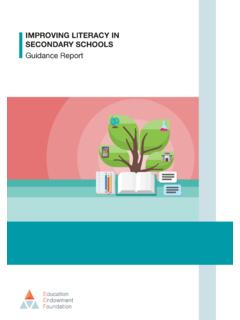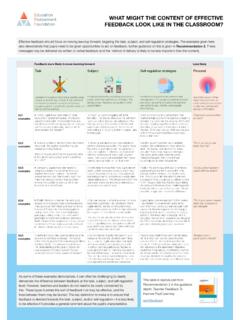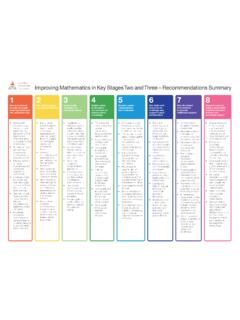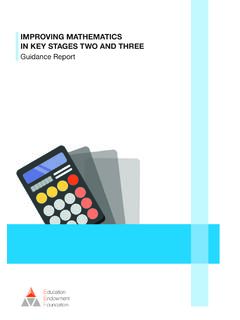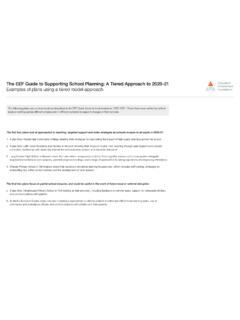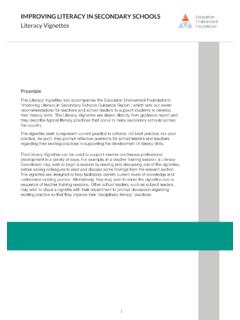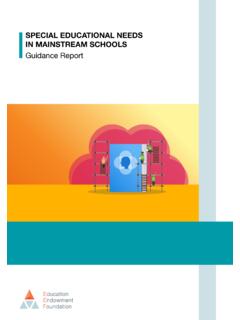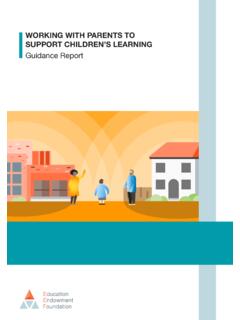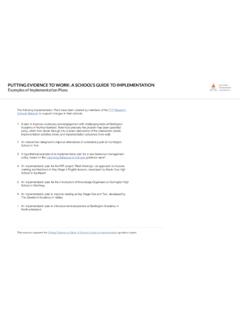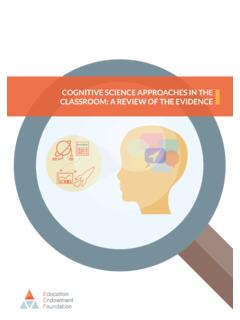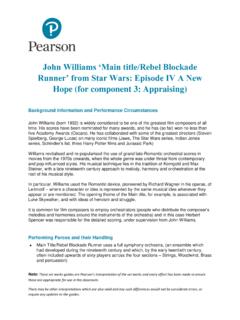Transcription of IMPROVING LITERACY IN KEY STAGE 2
1 Reader s Theatre IMPROVING LITERACY IN KEY STAGE 2 This resource supports the IMPROVING LITERACY in Key STAGE 2 Second Edition guidance Wise Multi-Academy Trust uses Reader s Theatre to support pupils to develop their reading fluency. Reader s Theatre is a widely used teaching strategy that exemplifies how guided oral reading instruction and repeated reading of texts can be used to support pupils to develop reading The Trust have developed their own guide to support the use of Reader s Theatre in the classroom. The Wise Multi-Academy Trust is a family of schools in the North East of England. Step 1: Adult as modelStep 2: Echo readingStep 3: Text allocationThe adult reads the selected passage of the class text aloud as an expert model of fluency whilst pupils follow the text with their own copy.
2 This may be repeated multiple times as necessary. Children echo back the section read by the adult, emulating their intonation, tone, speed, volume, expression, movement, use of punctuation, work in pairs or triads . Each group may:1. all have the exact same short section of text, or 2. a longer section might be split into short parts, so that each group has a different piece. Step 4: Repeated choral readingStep 5: Close readingStep 6: Text markingIn their groups, children read their section aloud, echoing the initial reading by the their pairs/ triads children make a close reading of their section of text and think about meaning, audience, and purpose. This requires children to look closely at the writer s use of language and consider characterisations, etc.
3 Each child has a copy of the text to annotate in order to inform their performance. This is discussed and agreed as a are provided to direct their 7: Practise Step 8: PerformStep 9: ReflectTime is provided for groups to rehearse their reading. They may decide to change or add to their performance slightly as a result of their rehearsal. Each group performs their rehearsed piece. (Adult may record so that children can appraise their own performance).Children evaluate their own and/or others performances and give feedback. They may use a reading fluency rubric or the prompts as success criteria to support articulation of evaluations. Young, C. and Rasinski, T. (2018) Readers Theatre: Effects on Word Recognition Automaticity and Reading Prosody , Journal of Research in Reading, 41, pp.
4 475-485. Garrett, T. D., and O Connor, D. (2010) Readers Theater: Hold on, let s read it again. , Teaching Exceptional Children, 43(1), pp. 6-13. Young, C. Stokes, F. and Rasinski, T. (2017) Readers Theatre Plus Comprhenship and Word Study , The Reader Teacher, 71(3), pp.
